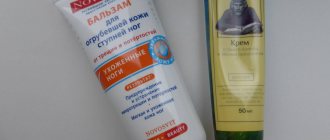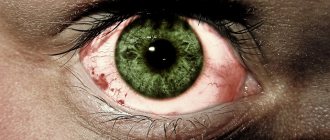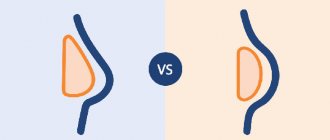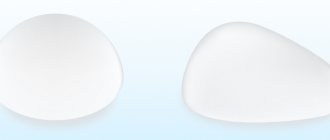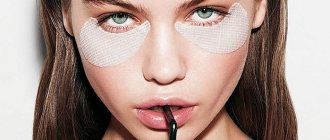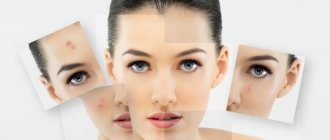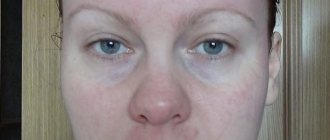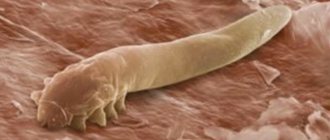The World Health Organization noted that more than 40% of people on our planet suffer from allergies, so today this disease is rightly called a pandemic of the 21st century. Every year there is an increase in incidence, and it is noted that among residents of economically developed countries the incidence rate is higher. A person encounters substances that cause an allergic reaction - allergens - not only on the street and at home, but even in food. When going outside, a person may have an allergic reaction to the pollen of flowering plants, but at home, pet hair or house dust becomes dangerous for him. Food allergies are considered the most insidious, as they greatly affect the quality of life. Food allergens can cause cross-reactions and if a person, for example, is allergic to birch pollen, then most likely he may experience a special reaction to eating certain raw vegetables or fruits.
Food allergies are considered the most insidious, as they greatly affect the quality of life.
Causes of allergies and types of rashes
There are many causes of allergies, the main ones being:
- food products (chicken protein, fish, seafood, cow's milk, citrus fruits, chocolate, nuts and many others);
- chemical detergents and cleaners;
- medications;
- household dust;
- pets (their fur, fluff, saliva);
- insect bites;
- helminth infestations (parasitic worms provoke allergic reactions in humans);
- environmental factors - cold, frost, sun;
- physical procedures associated with current (the cause of a rare form of allergy to physical activity and current).
Allergies often manifest themselves in the form of red, scaly spots that can be located on any part of the body surface.
Main types of rashes:
- Urticaria: rashes in the form of blisters, often multiple, can be located on any part of the body. Accompanied by redness, itching, local swelling. They usually go away within a day. Quincke's edema (swelling of the deep layers of the dermis and subcutaneous fatty tissue) of the upper respiratory tract often develops along with urticaria.
- Atopic dermatitis: The rash in adults is usually localized on the flexor surfaces of the arms and legs, on the back of the neck and behind the ears. The lesions are accompanied by redness, itching, and crust formation.
- Contact dermatitis: the cause is direct contact of the allergen with the skin, therefore it mainly occurs on the hands. The affected area exhibits hyperemia, weeping, swelling, and itching.
- Eczema can be localized on any part of the body, but most often it is the face and hands. It presents as hyperemic areas of the skin with severe swelling and multiple blisters.
For what diseases is Sinaflan indicated?
The drug is approved for use for inflammation of the skin not associated with infectious processes:
- psoriatic rashes;
- eczema of the body and scalp;
- lichen planus;
- multiple erythemas;
- superficial skin burns;
- itching of unknown origin;
- neurodermatitis;
- allergic symptoms;
- dermatitis;
- seborrhea;
- skin reactions to insect bites.
Before starting use, it is important to find out the nature of the symptoms. The use of Sinaflan for infectious or mixed manifestations may complicate the physical condition.
Rules for using hormonal ointments:
- Before use, be sure to consult your doctor. All drugs have contraindications and restrictions for use.
- Follow the dosage and frequency of application exactly. If exceeded, adverse reactions quickly develop
- Use hormonal ointments if necessary. There are safer means.
- Possible side effects from hormonal ointments, especially with long-term use - skin atrophy, the appearance of pustules against the background of reduced immunity, increased blood glucose, decreased adrenal gland performance, stretch marks, baldness, fungal infection. If they appear, consult your doctor immediately.
- Avoid contact with eyes and other mucous membranes. Rinse with plenty of water and if discomfort persists, visit a doctor.
- When applying, lubricate only the affected area, avoiding healthy skin. Otherwise, the opposite effect is possible in the form of skin redness and swelling.
- .The ointment requires gradual withdrawal. Do not suddenly stop using it - side effects and worsening of the underlying disease are possible.
Dosage form, composition
The active component of the drug is fluocinolone acetonide. Sinaflan is available in several forms for external use:
- liniment: yellowish viscous substance containing 0.25 mg of active substance per 1 g;
- gel: transparent yellow mass with similar content of fluocinolone acetonide;
- cream: a homogeneous oily substance.
Among the form-building compounds and stabilizers of the product: glycerin, paraffin, liquid paraffin, lanolin, ceresin, propylene glycol, purified water and other components.
All dosage forms of the drug are packaged in 10 or 15 ml tubes and cardboard boxes, equipped with instructions for its use.
Non-hormonal ointments
Non-hormonal ointments for adults for skin allergies have a mild, gentle effect; there is no systemic effect on the body.
Non-hormonal drugs will not cope with severe and chronic types of allergic dermatoses.
Psilo-balm (diphenhydramine)
Apply 2-3 g to the affected areas 3-4 times a day. Action: antihistamine, antipruritic, local anesthetic, cooling.
Indications: itching and irritation of the skin due to allergic dermatitis, insect bites.
During pregnancy: allowed as prescribed by a doctor. Use during lactation is undesirable.
Average price: 267 rub.
Fenistil (dimetindene)
Application: topically 2-4 times a day. After applying to large areas, avoid direct sunlight. Action: antipruritic, antiallergic, decongestant, antihistamine.
Indications: skin itching due to allergic dermatoses, insect bites.
Pregnancy: 1st trimester – permissible as prescribed by a doctor. II-III trimesters and lactation period - do not use for the treatment of extensive foci of allergies.
Average price: 362 rub.
Protopic (tacrolimus)
Treatment begins with 0.1% ointment, which is applied 2 times a day. If improvement occurs, you can reduce the frequency of application or switch to a 0.03% ointment dosage. Suitable for both short-term and long-term use. Can be used on the face, except eyes and mucous membranes.
Action: anti-inflammatory.
Indications: atopic dermatitis (moderate and severe forms) when other ointments against allergies are ineffective.
Pregnancy: contraindicated.
Average price: 678 rub.
Soventol (bamipin)
Apply a thin layer to the affected area; re-application is possible after 30 minutes.
Action: antipruritic, antiallergic.
Indications: allergic itching (urticaria, insect bites, eczema and other allergic skin manifestations), minor burns and frostbite.
Pregnancy and lactation: with caution.
Average price: 1010 rub.
Elidel (pimecrolimus)
Application: 2 times a day with an interval of 12 hours. Suitable for long-term use. Can be applied to the face, except eyes and mucous membranes.
Action: anti-inflammatory.
Indications: atopic dermatitis.
Pregnancy: with caution.
Average price: 986 rub.
Zinc ointment (zinc oxide)
Application 2-3 times a day. Can be applied to the face except eyes.
Action: anti-inflammatory, disinfecting, drying.
Indications: allergic dermatitis and eczema.
Pregnancy: no restrictions.
Average price: 36 rub.
What is Sinaflan intended for?
The drug reduces the manifestation of inflammatory reactions of the skin during autoimmune processes, exposure to toxins, biological and chemical allergens. Fluocinolone binds to cell cytoplasms, inhibits the production of the enzyme phospholipase A2, which provokes negative symptoms of irritation. As a result of using Sinaflan:
- the concentration of leukocytes and macrophages in the area of inflammation decreases;
- fluid outflow improves;
- metabolic processes inside cells are normalized: absorption of glucose, potassium, calcium, sodium ions;
- the production of arachidonic acid, one of the provocateurs of inflammation, is regulated.
Sinaflan inhibits the activity of cellular immunity: it reduces the accumulation of T-lymphocytes, thereby eliminating the factors of allergic manifestations. The substances of the drug act quickly directly at the sites of application, so the ointment has proven itself to be the best in the treatment of rashes and other superficial formations on the skin.
Fluocinolone easily penetrates into the stratum corneum, accumulates in them as therapy continues and persists for up to 15–20 days from the moment the application is stopped, providing a therapeutic effect. The components of the drug penetrate into the systemic bloodstream in minute concentrations, which are not hazardous to health. They are transformed in the liver and are completely eliminated from the body.
Hormonal drugs
Most effective for treating allergic red spots.
They are divided into 4 classes.
| Class | Effect | Drugs |
| I | They have a short-term effect and slowly penetrate the skin. | "Hydrocortisone" |
| II | They have a moderate effect on inflammatory skin processes, the effect is also quite slow. | "Prednisolone", "Desoxymethasone", "Lorinden", "Afloderm" |
| III | Quickly and effectively relieve inflammation, itching, and irritation. | "Elokom", "Celestoderm", "Sinaflamm", "Apulein" |
| IV | They penetrate deeply and quickly into cells and have a powerful anti-inflammatory and anti-allergic effect. | "Galcinonide", "Dermovate" |
Despite their high effectiveness, hormonal drugs can cause serious side effects, especially with long-term treatment.
Hormonal ointments rarely cause systemic complications such as diabetes, weight gain, and menstrual irregularities. This is possible either with increased sensitivity to the drug, or with a significant excess of the daily dosage. Most often, complications are local in nature and are manifested by fungal infection of the area where the ointment is applied.
Victoria Druzhikina
Neurologist, Therapist
Most hormonal ointments have a very similar mechanism of action and main indications, so you can combine them:
- Action: anti-inflammatory, antipruritic, antiallergic, decongestant.
- Indications: eczema, neurodermatitis, atopic dermatitis and other allergic dermatitis.
- Pregnancy and lactation: use only when absolutely necessary as prescribed by a doctor for short-term courses. During lactation, do not apply to the mammary glands.
Hydrocortisone
Quickly helps relieve itching and swelling. Penetrates deep into tissues and, with prolonged use, has a systemic effect. The effect lasts no more than 4 hours, so it requires 2-3 applications. Price – 35 rubles.
Prednisolone
Antiallergic, antipruritic, anti-inflammatory effect occurs quickly, works longer - up to 8 hours, applied 1-2, less than 3 times a day for 1-2 weeks. With prolonged use, skin atrophy is possible. Price - 30 rubles.
Elokom
The drug is based on mometasone. Apply 1 r/day. Helps with dermatitis and insect bites. The ointment is greasy and stains clothes. Price – 80 rubles
Elokom-S
In addition to mometasone, the composition includes salicylic acid, which dissolves rough scales, softening and cleansing the skin during peeling. Used 2 times a day for atopic, seborrheic dermatitis, psoriasis. The drug cannot be used for herpetic rashes and pustular lesions. Price – 780 rubles.
Advantan
Methylprednisolone drug. Wide spectrum of action. It helps well with insect bites, can be used in children from 4 months. Apply 1 time per day. The duration of use of the ointment is limited to 12 weeks in adults and 4 weeks in children. Price – 500 rubles.
Celestoderm
Active ingredient: betamethasone. It is used in pediatrics from 6 months, but produces side effects such as increased intracranial pressure, increased blood sugar, and adrenal suppression. Duration of use 1-3 times a day, lightly rubbing, duration of treatment up to 4 weeks. Price – 250 rubles.
Doctor's advice
If an allergy occurs, first of all you need to avoid contact with the allergen. Not only cream or ointment is important in treatment, but also following a hypoallergenic diet. Nuts, citruses, chocolate, chicken, cheese, eggs, fish, as well as all yellow, orange or red foods (carrots, beets, tomatoes, yellow apples and pears, watermelons, etc.) are excluded from the diet. This is done regardless of whether you have food intolerances or not. The above products help increase the level of histamine in the blood. Histamine is a chemical that triggers and maintains an allergic reaction. Therefore, it is important to follow a diet for 5-7 days, but if the process continues, then continue to limit your diet. For long-term eczema and dermatitis, each product is introduced gradually, separately from the others, and possible skin reactions are monitored.
Victoria Druzhikina Neurologist, Therapist
Lorinden-S
In addition to the hormone, Flumethasone contains the antiseptic clioquinol, which has an antimicrobial effect, so use is possible for impetigo, infectious dermatitis, as well as when a bacterial infection is associated with another type of dermatitis. Approved for use in pregnant women. Not for skin cancer. Price – 435 rubles.
Sinaflan
Fluocinolone contains acetonide. It also has an anti-edematous, drying effect. No more than 3 times a day; if improvement occurs, reduce the number of applications to 1-2 times a day. The duration of treatment is no more than 2 weeks. For hyperkeratosis, the ointment is used with an occlusive dressing once a day or twice for no more than 1 week. Price – 70 rubles.
Comparison table of ointments
| Name of ointment | Application | Additional effect | Average price (RUB) |
| "Hydrocortisone | For lesions 1-3 times per day. | 32 | |
| "Prednisolone" | 1-3 times a day, course 8-14 days. | 27 | |
| "Elocom" (mometasone) | 1 time per day, the duration of treatment is individual and determined by the doctor. | Good for itching and irritation of the skin. | 370 |
| "Elocom-S" (+ salicylic acid) | 2 times a day, daily dose no more than 15 g. | Gives a keratolytic effect. Helps with allergic dermatitis accompanied by hyperkeratosis (atopic dermatitis, seborrheic dermatitis). Hyperkeratosis is an excessive division of epidermal cells with impaired desquamation, leading to thickening of the skin. | 663 |
| Advantan (methylprednisolone) | 1 r/d. The duration of use should not exceed 12 weeks, and when using an emulsion - 2 weeks. | 550 | |
| "Celestoderm" (betamethasone) | Lightly rubbing 1-3 times a day, treatment duration up to 4 weeks. | 232 | |
| "Lorinden-S" (flumethasone, clioquinol) | No more than 3 times a day; if improvement occurs, reduce the number of applications to 1-2 times a day. The duration of treatment is no more than 2 weeks. For hyperkeratosis, the ointment is used with an occlusive dressing once a day or twice for no more than 1 week. | Plus antimicrobial and antifungal effect. Used for allergic dermatoses with associated bacterial or fungal infection. | 376 |
Ointments for allergies on the face, including the eye area
| Application | Indications | Average price (RUB) | |
| "Dex-gentamicin" (dexamethasone, gentamicin) | A small amount is placed in the conjunctival sac 1 to 4 times a day. If improvement occurs, gradually reduce the frequency to 1 per day. | Inflammatory eye diseases | 142 |
| "Hydrocortisone" | Injected directly from the tube into the conjunctival sac 1-3 times a day. | Allergic conjunctivitis | 16 |
In some cases, doctors prescribe ointments such as Advantan, Celestoderm-B, and Lorinden-S for allergies on the skin of the face and eye area. These drugs are applied to the eyelids and around the eyes, avoiding contact with the conjunctiva. They should be used very carefully, in short courses, strictly under the supervision of a doctor (the development of glaucoma is possible).
Non-hormonal allergy medications for use on the face (except eyes) include Zinc Ointment, Elidel, and Protopic.
Video
Useful video with an opinion on the use of Sudocrem cream
Hormone-free creams are available in pharmacies without prescriptions. Their abundance is associated with a narrow spectrum of action: Bepanten eliminates inflammation, La-Cri saves the epidermis from exposure to low temperatures, Sudocrem is one of the few that can be applied to the delicate skin of infants.
In most cases, external manifestations indicate internal contact with the pathogen. Even if you probably know the cause of a negative reaction, only a specialist can select the right drug.
Products suitable for pregnant women
There are quite a few ointments for skin allergies allowed during pregnancy. For most drugs, the instructions indicate that it should be used with caution, only as prescribed by a doctor, and some drugs are completely contraindicated.
But there are drugs that are absolutely safe to use for a baby:
- “Zinc paste” - described above.
- “Bepanten”, “Solcoseryl”, “Panthenol” - do not have a direct anti-allergic effect, but have a regenerating, softening, moisturizing and anti-inflammatory effect.
Here is not a complete list of ointments against skin allergies, but only some popular representatives. It is not recommended to prescribe such medications on your own, especially if you are experiencing the disease for the first time. Only a doctor, after a full examination, will be able to prescribe a full treatment, which will include, among other things, local therapy.
If you still have questions, ask your allergist-immunologist.
This article has been verified by a current qualified physician, Victoria Druzhikina, and can be considered a reliable source of information for site users.
Bibliography
1. https://www.rosminzdrav.ru/documents/9159-poryadok-okazaniya-meditsinskoy-pomoschi-naseleniyu-po-profilyu-allergologiya-i-immunologiya-utv-prikazom-ministerstva-zdravoohraneniya-rossiyskoy-federatsii-ot- 7-noyabrya-2012-g-606n
Rate how helpful this article was
4.6 52 people voted, average rating 4.6
Did you like the article? Save it to your wall so you don’t lose it!


